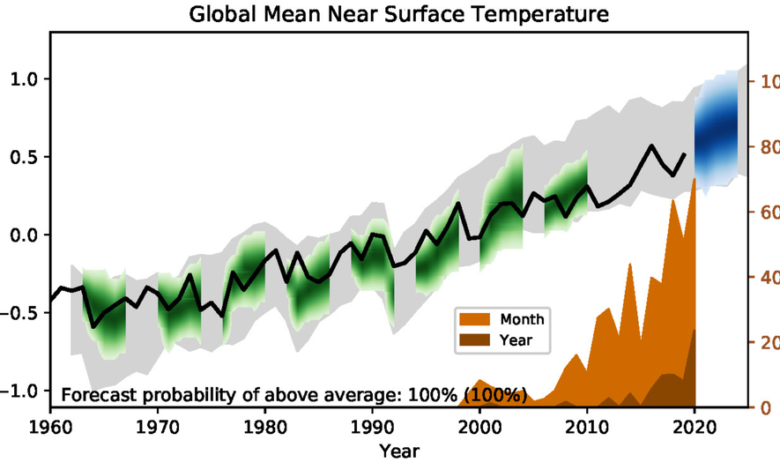According to artificial intelligence, the Earth will cross the +1.5˚C global warming threshold in 2033, and these predictions, considered to be more powerful than climate models, also paint a harsher picture.
Currently, the +1.2˚C threshold relative to the pre-industrial era has already been reached, and according to a study published in the Proceedings of the national academy of sciences, the thresholds set by 193 states in 2015 at the time of the Paris Agreements will be reached in ten years for the +1.5˚C threshold and in 2050 for the maximum +2˚C threshold, even taking into account the current efforts made to reduce greenhouse gas emissions.
These predictions were made with artificial intelligence using an artificial neural network, a computer system inspired by biological neurons adapted for climate forecasting. The calculations resulted in three scenarios that all conclude that the +1.5˚C threshold will be crossed between 2033 and 2035.

The origin of the +1.5˚C threshold is explained, according to the scientists, by the consequences for agriculture, access to water, conflicts and population migrations that will be caused by the multiplication of natural disasters, such as drought, flooding, heat waves or forest fires beyond this threshold. Compared to Artificial Intelligence’s estimates, those of the IPCC predict global warming between +1.6˚C and +1.9˚C before 2040 and +2˚C between 2040 and 2060, and those of the UN predicts a one-in-two chance that the +1.5˚C threshold will be reached as early as 2026. Artificial Intelligence has calculated an 80% probability that the +2˚C threshold will be reached in 2065 even if carbon neutrality is achieved by then.
On the other hand, if greenhouse gas levels remain at today’s levels, this threshold will be reached as early as 2050. Scientists believe that artificial intelligence estimates are more reliable because it takes into account more elements than climate scientists’ models, and it can improve their predictions by learning. The objective of this publication is to encourage the implementation of as many measures as possible to delay the crossing of the thresholds.



Comment here